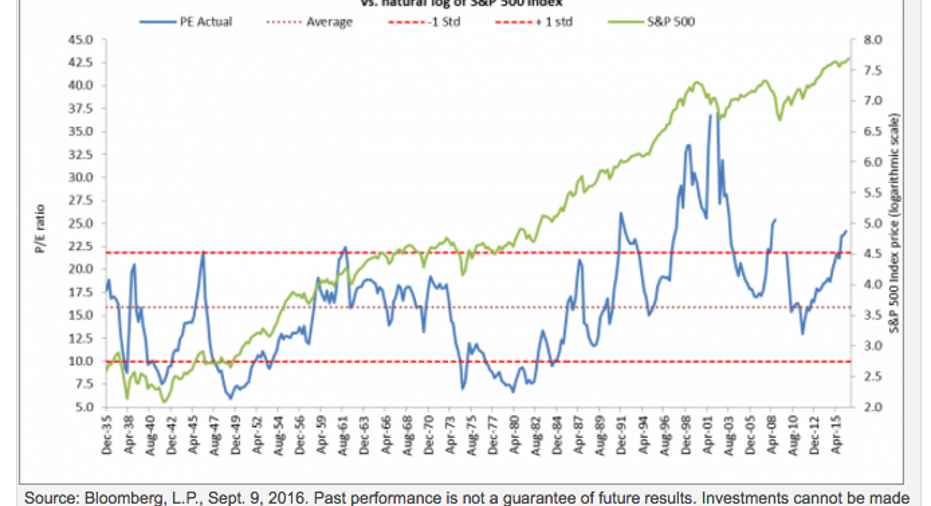Stock Valuations Are Elevated, but Are Prices Unprecedented?

Note: This article is courtesy of Iris.xyz
By: Nick Kalivas, Senior Equity Product Strategist, PowerShares
In recent months, questions about equity market valuations have flooded my desk. The rising price-to-earnings (P/E) ratio for the S&P 500 Index and the run-up in equity prices seem to have shaken investor confidence in future returns. With this in mind, it is worth considering equity valuations from a historical perspective.
A historical look at equity valuations shows wide variation
A look back in time suggests that P/E ratios have varied widely over the past 80 years. This can be seen in the graphic below, which displays the trailing P/E ratio for the S&P 500 Index between December 1935 and June 2016, overlaid with the logged value of the S&P 500 Index across the same period. (The S&P 500 Index uses a logarithmic scale so that price movements over time can be seen more clearly, while the 1990s tech bubble and 2008 financial crisis are excluded as outlier events.)
This graphic illustrates a few key points:
- Since 1935, the P/E ratio for the S&P 500 Index has averaged 15.9, with a standard deviation of 5.9. At writing, 97.8% of S&P 500 companies had reported earnings for the June 2016 quarter. The mean P/E ratio was 24.2 and elevated relative to history.1
- There appears to be some tendency for P/E ratios to revert to mean, but this reversion has been less clear since the early 1980s, and the S&P 500 Index has not seen its P/E ratio drop below 10 since around 1982.3 There are a number of potential explanations for this, including behavioral changes, advancing technology and a declining interest rate environment.
- P/E ratios tend to rise and fall with the market. Put another way, bull markets tend to see rising and high P/E ratios and bear markets tend to see falling and low P/E ratios.
Click here to read the full story on Iris.xyz.
This article was provided by our partners at ETFTrends.